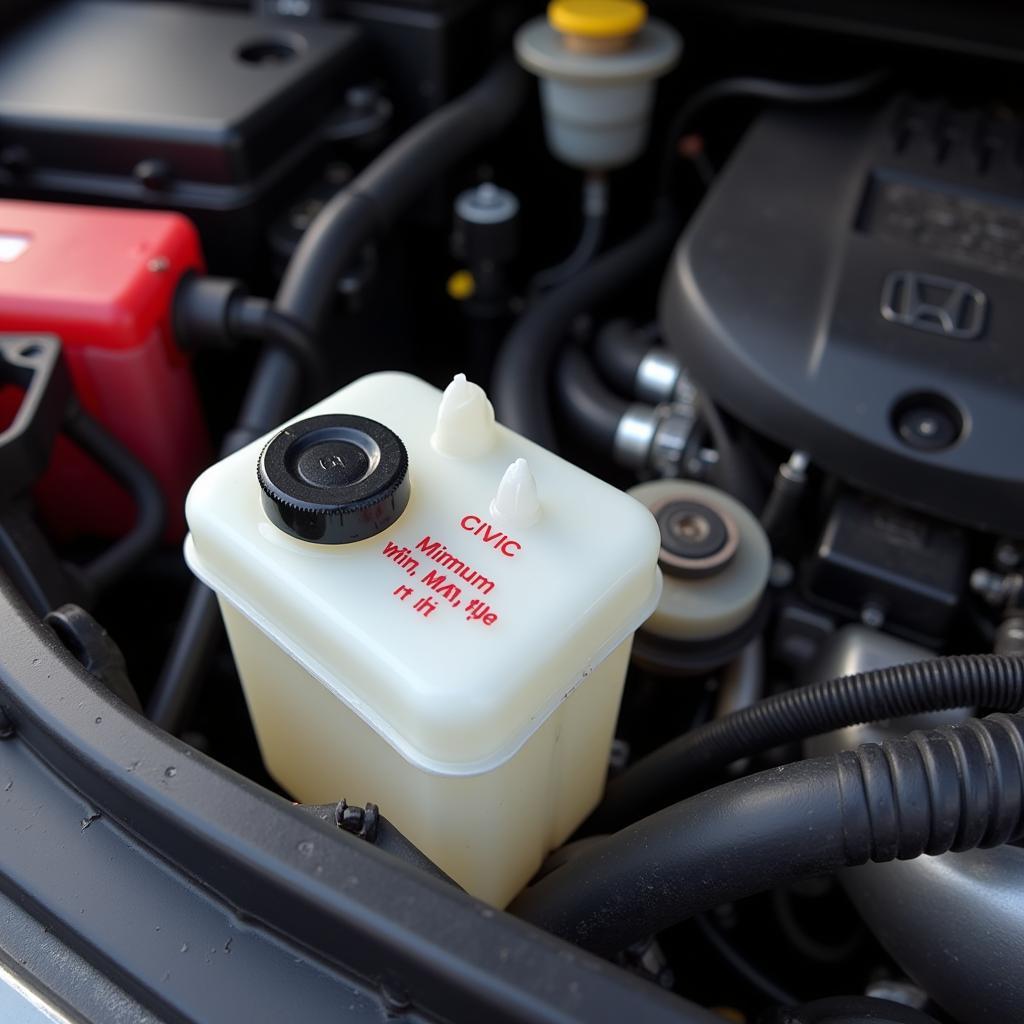When you see the AdBlue warning light on your 2013 VW Passat, it can be a concerning sight. This warning light indicates that your vehicle’s emissions control system needs attention, and it’s essential to understand why it’s activated and what steps you need to take. In this comprehensive guide, we’ll delve into the common causes of this warning light, explain how it works, and provide practical solutions for resolving the issue.
Understanding AdBlue and its Role in Your VW Passat
AdBlue is a non-toxic urea solution used in modern diesel vehicles to reduce harmful nitrogen oxide (NOx) emissions. It’s injected into the exhaust system, where it reacts with NOx, converting it into harmless nitrogen, water, and carbon dioxide. The AdBlue system is a crucial component of the emissions control system, ensuring your car complies with strict environmental regulations.
Common Reasons for the AdBlue Warning Light on Your 2013 VW Passat
There are several reasons why the AdBlue warning light might illuminate on your 2013 VW Passat. The most common culprits include:
- Low AdBlue Level: The most frequent cause of the warning light is simply a low AdBlue fluid level in the tank. Your car’s computer monitors the AdBlue level and triggers the warning light when it falls below a certain threshold.
- AdBlue Tank Sensor Malfunction: The AdBlue tank has a sensor that measures the fluid level. If this sensor fails, it can provide inaccurate readings, resulting in a false warning light.
- AdBlue Injector Problem: The AdBlue injector is responsible for injecting the solution into the exhaust system. If the injector is clogged, malfunctioning, or damaged, it can disrupt the emissions control process and trigger the warning light.
- AdBlue System Wiring Issues: Problems with the AdBlue system’s wiring, including loose connections or damaged wiring, can interfere with communication between the various components and lead to the warning light.
- AdBlue Pump Failure: The AdBlue pump is crucial for delivering the fluid to the injector. If the pump fails, the system won’t function properly, causing the warning light to appear.
How to Resolve the AdBlue Warning Light
The best course of action for resolving the AdBlue warning light depends on the underlying cause. Here’s a step-by-step guide:
- Check the AdBlue Level: The simplest step is to check the AdBlue fluid level in your tank. You can usually find the AdBlue tank filler cap near the fuel filler neck. If the level is low, simply add more AdBlue, which you can purchase at most automotive stores or dealerships.
- Reset the Warning Light: After adding AdBlue, you may need to reset the warning light. This can typically be done by following a specific procedure outlined in your vehicle’s owner’s manual or by using a diagnostic tool.
- Diagnose the Issue: If adding AdBlue and resetting the warning light doesn’t resolve the issue, it’s time to diagnose the problem. You can try using a diagnostic tool to read any stored fault codes. These codes can pinpoint the specific component that’s causing the issue.
- Consult a Mechanic: If you’re not comfortable diagnosing the problem yourself, it’s best to consult a qualified mechanic. They have the necessary expertise and equipment to accurately diagnose the problem and recommend the appropriate repair.
Tips for Preventing AdBlue Warning Lights
- Regularly Check AdBlue Levels: Make it a habit to check your AdBlue level periodically, especially if you frequently drive long distances or use your vehicle for towing.
- Use High-Quality AdBlue: Always use high-quality AdBlue from reputable sources. Using counterfeit or substandard AdBlue can damage the AdBlue system.
- Keep the AdBlue Tank Clean: Avoid contaminating the AdBlue tank by keeping the filler cap clean and ensuring that the filler nozzle is inserted correctly.
- Be Aware of Potential Issues: Be mindful of any unusual noises, odors, or performance changes that might indicate a problem with the AdBlue system.
FAQ
Q: Can I drive my car with the AdBlue warning light on?
A: While you might be able to drive for a short distance, it’s not recommended to drive your car with the AdBlue warning light on for an extended period. Continued driving with a low AdBlue level can result in reduced performance, engine damage, and potentially lead to a breakdown.
Q: How much does it cost to fix an AdBlue warning light?
A: The cost of fixing an AdBlue warning light can vary depending on the underlying cause and the extent of the repairs needed. Simply adding AdBlue is the cheapest solution, while replacing a malfunctioning AdBlue injector or pump can be more expensive.
Q: Can I disable the AdBlue system?
A: Disabling the AdBlue system is not recommended and can lead to legal penalties in many jurisdictions. The AdBlue system is crucial for reducing NOx emissions, which are harmful to the environment.
Conclusion
The AdBlue warning light on your 2013 VW Passat should not be ignored. Addressing the issue promptly will help ensure your vehicle’s emissions compliance and maintain its optimal performance. By understanding the common causes and following the steps outlined in this guide, you can effectively resolve the warning light and keep your Passat running smoothly. Remember, if you’re unsure about any aspect of the AdBlue system, consult a qualified mechanic.

